By J. (Joseph) Conklin Lanier, II
How I, then a teenager of African descent, found myself thousands of miles away from my placid, rural Mississippi home and on a dangerous volcanic island known as Iwo Jima in the middle of the Pacific Ocean, where tens of thousands of men met violent deaths, is a journey at which I still marvel today, some 65 years later.
In many ways, my journey from small-town youth to a member of one of the U.S. Navy’s Seabee (Construction Battalion) units is not all that remarkable. After all, some 1,150,000 blacks served in the United States military during World War II. On the other hand, what I and these other 1,150,000 men and women in uniform went through certainly helped to profoundly change the course of history in this country.
To understand how all this came about, let us start at the beginning––my beginning.
I was born to J. (Joseph) Conklin LaNier I and Savilla Barnett Roberts LaNier on March 25, 1926. In 1935, when I was nine, my folks moved from Memphis Town, where my father rented about 40 acres of land, into Columbus, Mississippi, which was the county seat of Lowndes County and was then a community of maybe two or three thousand persons. It’s located between Tupelo and Tuscaloosa.
Columbus was then a completely racially segregated society, one black, one white. There was no middle ground. All facilities in the Deep South, private and public, were segregated. There was no mistaking this separation of the races; all facilities such as drinking fountains and restrooms and hotels and barbershops and restaurants were marked either “WHITE” or “COLORED”––ditto public transportation. If you were black, you sat in the back of the bus; if you were white, you got to sit up front. In many of the white-owned clothing stores, a black person could not try on an article of clothing, and if you bought it, you owned it; you could not return it.
There was no “mixing” of the races, except when blacks were hired to perform menial labor for whites. Although we silently resented the situation, there was no arguing about it. That’s just the way it was. Tradition. The status quo. The Jim Crow laws. Apartheid. Segregation.
This is not to say that the North was void of segregation. This was life in America, the supposed Land of the Free, in the first half of the 20th century.
On October 27, 1940, my mother died at age 49. My father was left with two daughters, Ruth, 11 years of age, and Gladys, nine years of age, myself at 14, and my older brother Ira, at 25. Our father never remarried. He did not have a job, so he became a handyman.
On December 7, 1941, as everyone knows, the Japanese attacked the U.S. naval base at Pearl Harbor, Hawaii, and the United States was suddenly thrust into what became World War II. Other than the news accounts, it didn’t mean much to me. The segregation was so complete; “patriot” was not part of my vocabulary.
Doing all he could to care for his family, Papa (that is what southern blacks called their father) was not home very often. I dropped out of school when I was in sixth grade. My father was not happy about it; he had had a sixth-grade education, too, but he knew if his children had any chance of breaking out of poverty, education was the key.
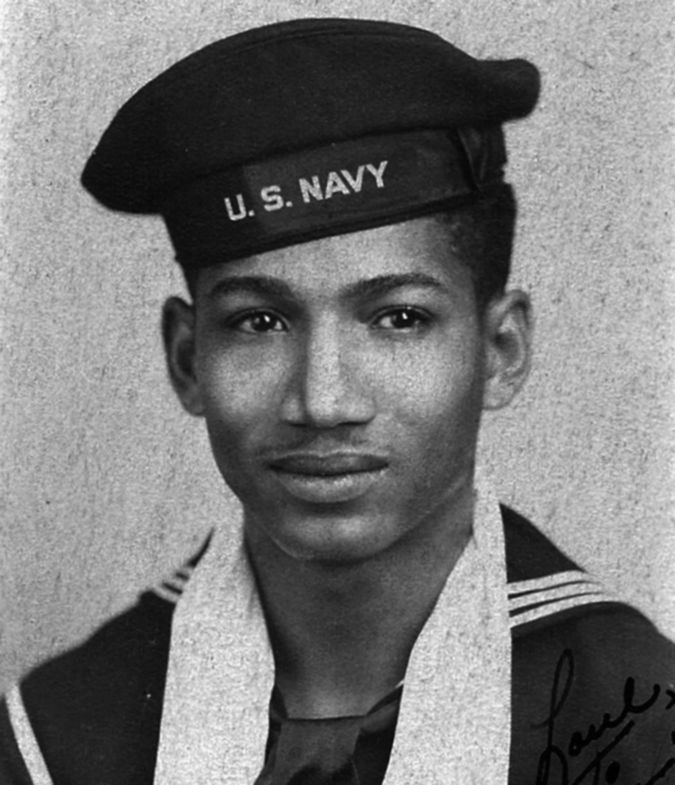
Nonetheless, I got a job delivering groceries to white families––my salary, two dollars a week. Later, I got a job washing dishes for $3.50 a week, 12 hours a day, seven days a week, with one meal a day. After I was there for a while, I felt I had earned a raise to what the rest of the guys were paid. I asked the owner for a raise to $5.00 a week––she fired me.
I understood I needed to go back to school and, at 17 years of age, I knew I had to do something to help my father, who had been out of work. To this day I cannot describe what caused me to take the next step that I took. I had seen the posters and advertisements about the United States armed forces, so I went to the Navy recruiting office and asked to sign up. I had no particular reason to choose the Navy. At the time (early 1944), I was not aware that, if I was accepted, I would be among the first blacks to be inducted into the Navy with the rating of seaman, for the U.S. armed forces were then about as segregated as Columbus.
Prior to my enlisting, blacks could only be steward’s mates in the Navy, which meant you were a waiter for the officers. I had simply decided to go into the service; what I would be doing did not matter. At 17, I needed parental approval to enlist, so I asked my father if he would sign the release. I assured him I would send him a monthly allotment to help him financially with my sisters; at that time, Navy pay was $51a month. An allotment to my father would be $37 a month––$22 deducted from my pay and another $15 added by the government.
He agreed and, on February 2, 1944, I became an apprentice seaman. I had nine days before I had to report to the Naval Office in Jackson, Mississippi. Even there, total segregation was still in force. They couldn’t put me up in a hotel; I had to be housed with an approved colored family.
As with all recruits, I had to go through an initial period of training to see if I was physically and mentally capable of being in the military. After all, the lives of your comrades and the accomplishment of your unit’s mission often depends on your being able to do your job properly. My initial training, or “boot camp,” would take place at the Great Lakes Naval Training Center, north of Chicago.
When I arrived in Chicago, I was awestruck. Back in Mississippi, my entire world was about 15 square miles. I had never seen tall buildings before, and the sheer size of the place was beyond my imagination. Even more amazing, I saw black people and white people riding together on the streetcars and on the “L,” and there were no separate seats for blacks. There were no separate facilities for whites and blacks anywhere that I could see; it was like seeing something in another world.
When I arrived at the Great Lakes Naval Base, I went through the normal things every serviceperson must go through––a physical examination (including a “short-arm inspection” to check for venereal disease), the issuance of uniforms and shoes, assignment to a barracks, etc. We lived in a part of the base called Camp Robert Smalls, which was set aside exclusively for the training of black sailors.
Through all this I did not see any white people other than officers, some of whom were also doctors. Then I attended an orientation where I learned the name of the person in charge of the base, a Commander Armstrong. Next, it was time for my G.I. haircut. During this era, black males wore their hair cut short except in the front; the hair in the front that was kept long was called a “top knot.” There was a scented pomade (grease) to “slick” it back and hold it down. This process was very important to your “manhood.” So when I got to the barbershop and it became my turn, the barber asked me if I wanted to keep it. I was very proud of my topknot, so I said, “YES!” His response was, “Catch it,” which meant within seconds my topknot was gone.
For the next two months we trained. We learned the discipline needed to survive the kind of war being waged in 1944. For me, I had to learn to swim. Except for a few shallow swimming holes, there was no place for us to learn how when I was growing up. In the swimming pools at Great Lakes, I quickly learned that if you got tired you couldn’t stop, stand up and rest, and then resume swimming. You just had to keep going.
We also marched, marched, and marched. It didn’t make any sense to me then, but I eventually learned it was a method of teaching us discipline, among other things. On the other hand, I felt we were not really being trained for war. We black sailors were sort of a “show” because our marching formation was not “ramrod straight.” Racism was still rampant and open. We did all kinds of funny steps that would not be tolerated, for instance, at the Naval Academy. The white officers would come to watch us do “our thing.” It was like, “These colored guys don’t have to be professional; they’re here for our amusement. They have a rhythm white guys don’t have. Besides, they’re here to do the “scut” work.”
During this period, the first black officers (11 of them) had been commissioned in the Navy. They all came by our camp at Great Lakes to give us hope that we could now have dreams of a naval officer career. I recall the pride I had meeting these officers. I remember thinking, so much for the vow President Roosevelt’s secretary of the Navy, Frank Knox, took at an earlier time: “The Navy will remain lily white.”
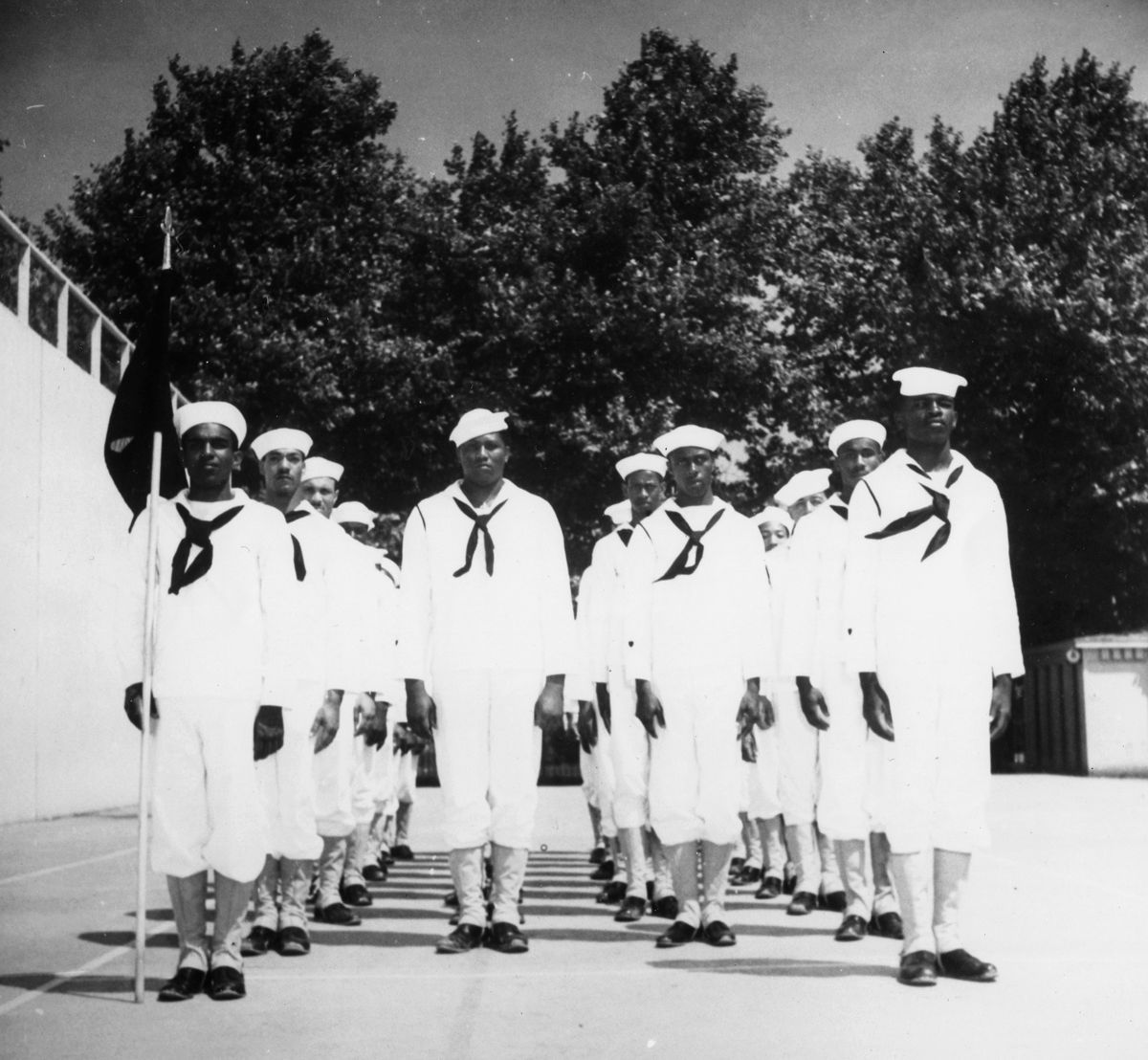
One of the black officers, Ensign Samuel Lee Gravely, Jr., was the first African American to be commissioned as an officer in the Navy and went on to become the first black admiral. I remember his response to a question in Ebony magazine later about not enough blacks being promoted to admiral: “It takes twenty-seven years to make an admiral. We just have not been in business that long for that to happen frequently.” I also remember my wanting to be a naval officer after I met those ensigns. Later I learned that, with less than a ninth-grade education, there was no way that would happen unless I went back to school.
After boot camp, we were all given the rating seaman, second class; that had never happened to blacks before. We then got a nine-day leave. My father was not an emotional man, but during those nine days, he was visibly proud of his son. Everybody in our neighborhood made me feel proud that I was in uniform. W-e-l-l, almost everybody. The girl I liked was not impressed.
Before I went into the Navy, I had worked in a laundry as a presser, so I went by the shop to visit the people who were still there. When I entered, the owners were happy to see me in uniform. I went back to the pressers’ area and there was a new foreman, a white man. I introduced myself to him and when he asked a question, I answered with “Yes.” His response was, “You say ‘yes, sir’ to me, and don’t you forget your place.” Truly, I knew better then to say simply “yes” to him, but I had not had to do that to a white person other than officers for two months. I truly forgot. It was a grim reminder to me that, in uniform or not, I was still not equal.
I must add here that all of this humiliation to this point in my life and the same humiliation I would encounter later as I moved forward in my life was, and is, hurtful, but I don’t remember it being surprising to me. I never allowed it to rise to the emotion of hate. For that I give credit to my father; he never taught us to hate.
When I returned to Great Lakes from my leave, I learned that we would be leaving the next day for California. Our new commanding officer, a Lt. J.G., assembled us the next morning to introduce himself. He told us we were going to do whatever we needed to do to kill “Japs.”
Then he said these words (and I repeat them verbatim): “I am from Georgia and I want you all to know that there are two kinds of niggers––a good nigger and a dead nigger––and we don’t want any dead ones.” There were three older men in our group who went to the base commander and protested this officer’s behavior. This officer was removed from our unit and we were told he was “busted” to seaman first class. We never had any confirmation of that and, frankly, I have always doubted it, though it could have happened.
In any case, a chief petty officer, a short little guy, was promoted to Lt. J.G. and assigned to our unit. We all knew him; he accompanied the officer of the day on his rounds of inspection when we were in boot camp. If your bunk was not made up properly, your mattress was pulled off your bunk and the officer would walk on it and you would get extra duty. The chief petty officer would hand out the extra duty, thus his nickname, “Extra-Duty Shorty.”
The next day we boarded a train to California.
On our train ride to California, two things stand out in my mind. One, we stopped in North Platte, Nebraska, for dinner. The Red Cross ladies––all white––had prepared dinner for us at the train station. The dinner was real class, white tablecloths, and flowers on the tables. Plus, there were no signs over the water fountains
or restrooms that read “Colored” or “White.” And the ladies were so friendly; they even casually touched us. I had never witnessed this before from white people, especially female. This was such a change from what I had known; it is like a stamp on my mind that brings back a pleasant memory that has never gone away.
The second memory was when our troop train was passing the Great Salt Lake. I had never seen so much water. I was told that there was so much salt in the lake that a person could not sink. I thought, how wonderful that would have been the two times I almost drowned in the swimming hole back home.
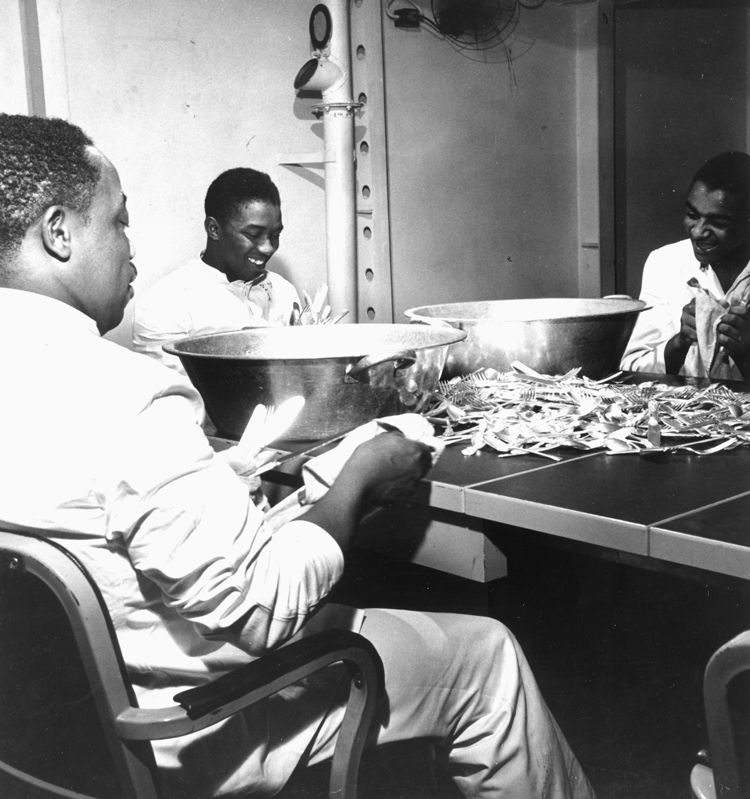
When our troop train arrived in Oakland, California, buses took us to Camp Shoemaker, about 40 miles east of Oakland; we were there for about three weeks. We stood muster every morning and for the rest of the day we did nothing. Some days it was difficult to find even “nothing” to do.
Every weekend we got liberty and, in addition to taking in all the beauty of the countryside, I got to see and participate in the nightlife of San Francisco. And when I saw the ocean for the first time, it was just breathtaking. When I saw the Great Salt Lake I thought that was a lot of water, but when I saw the ocean, I thought the Great Salt Lake looked like a puddle.
I had the opportunity to mingle with all kinds of people in Oakland and San Francisco. I must admit, when I needed to use the facilities, I would find myself looking for the sign marked “Colored” to be sure I didn’t go into the wrong place. It took some time for that cautiousness to go away. I was fascinated taking in all the newness of almost everything I saw and experienced. Especially this new FREEDOM I was experiencing that allowed me to engage with people of different races and ethnicity than myself, and I didn’t have to say “Yes, sir” or “Yes, ma’am”––and if I didn’t, there was no fear I would get a closed fist in my face.
Then came time to sleep. None of us could afford a hotel; since my pay of $29 per month didn’t go very far, even in 1944. My hotel became the San Francisco train station waiting room. I should point out I wasn’t the only serviceperson to use that “hotel.”
At the end of our stay at Camp Shoemaker, our commanding officer told us that the next morning buses would take us to the pier, where we would board the ship that would take us to our unknown destination. After we boarded ship (an old merchant ship converted to a troop ship), we moved out to sea. Even this was an adventure for me, as I had never been on a ship before. As a matter of fact, before Great Lakes, I had never seen a ship.
As we moved from the pier, I stayed on deck to watch San Francisco fall behind the horizon. It was an experience I have no words to describe. I don’t know where I thought San Francisco had gone; I just know it scared me. I could not imagine being detached from the United States.
My second experience, this one unpleasant, was becoming seasick. I was as sick as I have ever been. No one had told me about it and I had no idea why I could not eat and, when I tried, I’d throw it up. There was nothing the doctors could do about it, and it went on for almost three days.
For over six days I saw nothing but our ship and the Pacific Ocean. On the seventh day we saw land; we were told it was Honolulu, Hawaii. Diamond Head was pointed out to us. I remember thinking that did not look like a diamond to me. I had never heard of Hawaii, but at least now I knew where we were and I could get off this rolling object.
Honolulu was different for me. Since I had never heard of the place, I did not have a preconceived notion of what I was seeing. After we disembarked, we were taken to a building at Pearl Harbor where we “waited around.” There is a lot of “waiting around” in the Navy.
Finally, we were taken to the mess hall for lunch; afterward, we marched to our barracks. One of the things I noticed as we “waited around” was, in addition to the Navy personnel, most of the civilians I saw cleaning the floors and taking out the trash were Hawaiian or Asian, not white. That was a huge difference from what I was used to, a different kind of discrimination. Even though the civilians were not black, it was clear to me they were doing the kind of “scut” work blacks did back home.
After a day or two, our commanding officer gave us our assignments. Mine was at the boathouse. I was to report in my white uniform. I thought I might be learning to repair boat motors, but it was confusing to me wearing my white uniform to do that.

When I reported to the boathouse, I learned why I wore my white uniform. There were two ways you could travel across the bay from Pearl Harbor to Honolulu. You could catch the ferry, which had a regular schedule to leave Pearl Harbor, or you could ride in small boats to cross the bay to the city. The advantage of the small boats was that they didn’t have a regular schedule. They would go across the bay, let off passengers, and return to Pearl Harbor for more passengers. Those small boats had to have someone to tie them up at the dock on both sides of the bay. Yep, you guessed it––my assignment was to tie and untie the small boats. And that is why I wore my white uniform to the boathouse.
I was disappointed, but I really did not resent this assignment. I saw my duty as doing whatever it took to make a contribution to victory. Someone had to perform the duty I performed; in this case, it was me. As far as my being assigned to less than brain-stimulating duties, this was the system I knew and had grown up with. I learned early that if you allow yourself to be an angry person, no one is miserable but you. And you need to find the avenue to extricate yourself from what you are not happy with. Uppermost in my mind was winning the war so we could continue to live in a land where the rule of law keeps us free to keep working on making a more perfect union.
I do not now remember how long I performed this duty before I was transferred to the laundry. For the remainder of my time in Hawaii, I worked in the laundry. Nothing spectacular happened there. I enjoyed working with the native Hawaiians. Two people I remember are Sadie and Nancy. Sadie was kind of the “mother hen” of the laundry. I remember Nancy because she was curious about my hair and was surprised that I spoke English; she thought I spoke a language from Africa.
Another young lady there, Mary, was about my age and beautiful. We often had conversations with each other and I thought our “chemistry” was good––until I made my move. She rejected me and it was clear she would never allow herself to become involved romantically with a black man.
I don’t know why I was surprised to learn that about the separation of the races. When the white male was, or would be, involved with a female of any color, no black male need apply. That really bothered me. Not because it happened, but rather because the lady was not white and I had butted up against separation of the races, even across an ocean. So when I got liberty, I went into Honolulu, down on Hotel Street (the “red-light” district), and I drank rum and Coke to a fair-thee-well. I don’t remember getting back to the barracks. What I do know, I was sicker than I was when I was seasick. And to this day, with the little drinking I do, I don’t drink rum.
In early January 1945, our commanding officer assembled our group. He called out several names, mine included, and told us we were being transferred to the 23rd (Special) CBs. I didn’t know what the CBs were, but it sounded to me like another adventure, and I welcomed it.
“CB” stands for “Construction Battalions” and they are roughly like the engineers in the Army. They build whatever the Navy needs––roads, airfields, ports, you name it. They also load and unload cargo. Our 23rd (Special) CB, or “Seabee” unit was attached to the 3rd Marine Division. We had about 20 officers and almost a thousand enlisted men in the battalion.
We learned that our primary job was not to build roads and airfields and ports. Our job was to unload ships and boats full of cargo and deliver it either to supply dumps or directly to the Marines under fire. Records show we were 75.5 percent black. Our commander, H.W. Heuer, was white, as were our officers and most of the NCOs.
We were moved to Iroquois Point, Oahu, where we remained for about three weeks. Then, at the end of January 1945, we boarded a ship to another destination unknown. We stopped at the Marshall Islands, Guam, Saipan, and Tinian, which had all been captured in 1944, but none of us left the ship at any stop.
On February 24, when we arrived at Iwo Jima, it was D+5, which means the operation to capture the island had begun five days earlier. A few words about Iwo Jima. The name means “Sulfur Island.” It’s located about a thousand miles due south of Tokyo. On maps, Iwo Jima looks like a huge ship in the Pacific. It’s about two-and-a-half miles wide and about four-and-a-half miles long. The Japanese had been there for many years and had turned it into a massive fortress laced with underground tunnels, command posts, hidden gun positions, sniper holes, and bunkers.
There was also an airfield there, and the United States wanted to take the island in order to use the airfield as a base for our B-29 bombers. The Japanese, naturally, did not want to give it up because the loss of Iwo Jima would mean more and more heavy bombing raids against their home islands. Iwo Jima was of vital, strategic importance to them. And to us.
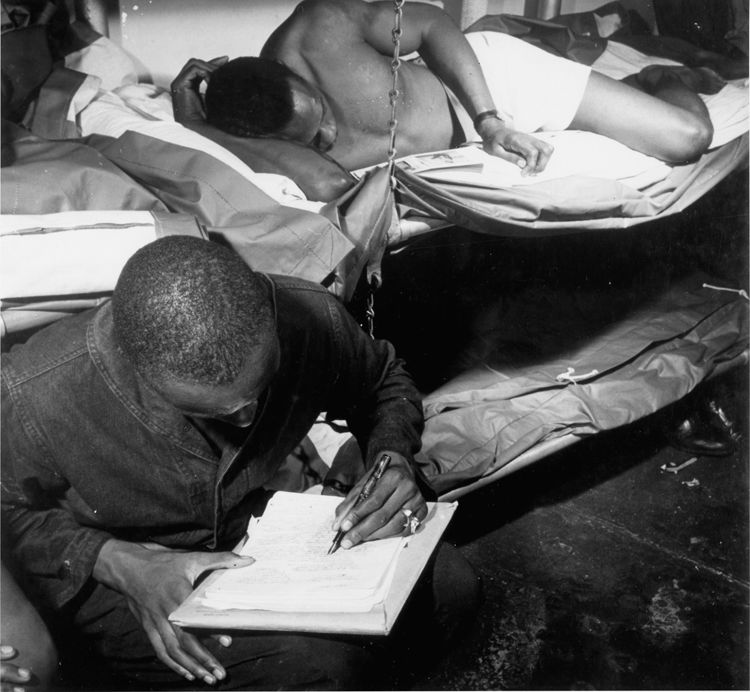
So they beefed up their defenses there by increasing the garrison to nearly 23,000 men who were given a “stand or die” order and told that there was no hope of rescue or reinforcement. Each man was expected to fight to the last bullet and take as many Americans with him before he himself died for the emperor and for Japan. Defending Iwo Jima was a suicide mission, a land-bound kamikaze attack.
The American plan of attack was for the 4th and 5th Marine Divisions, with the 3rd Division in reserve, to land on the southern beaches to the east of Mount Suribachi, take the mountain, and move inland to capture the airfield, all the while pushing the Japanese into the northern part of the island where they could be finished off.
For three days, starting on February 16, 1945, dozens of American warships stood off the island and barraged every inch of it with high explosives while carrier-based fighters hit it from the air. After this pounding, the Marines would go ashore to wipe out any opposition that hadn’t already been wiped out. Unfortunately for the Marines, most of the defenders, hiding safely deep in their underground fortress, hadn’t been wiped out. They were ready and waiting to strike back at the invaders.
From the 19th to the 24th of February, when we arrived, the Marines and Japanese had been slugging it out, with no quarter asked and none given. When the defenders refused to come out of their fighting holes or bunkers, Marines with flamethrowers burned them out. It was slaughter on a mass scale. The Marines suffered greatly, too. In the 35-day battle for Iwo Jima, more than 6,800 of the 30,000 Marines who came ashore were killed and over 19,000 were wounded. It was the greatest single loss of life in Marine Corps history.
I understand that, of the island’s 22,780-man Japanese garrison, only a little over 200 survived. Many committed suicide rather than surrender. So brutal was the fighting that, afterward, Admiral Chester Nimitz said, “At Iwo Jima, uncommon valor was a common virtue.” He was right; 27 Marines and sailors were awarded the Medal of Honor. Twenty-seven.
Black troops on Iwo also performed with bravery. Two black Marines from the all-black 36th Depot Company were awarded the Bronze Star.
When we left our ship and came ashore on the 24th, we dug foxholes into the soft, volcanic soil at the base of Mount Suribachi. At the top of the 500-foot mountain, a squad of Marines had planted the American flag there the day before, but we couldn’t see it from where we were dug in. The fighting was still going on. It was so fierce, we had to stay in our foxholes for days. I remember living in a foxhole for two months.
The famous photograph of the flag raising was taken by Joe Rosenthal. What one may not know is that photo was of the second raising of the flag. The first flag was too small, so, with grave danger to themselves, the Marines got a longer pole and a bigger flag and raised it again. The photo was not posed or staged. It just happened.
Three of the men in the photo were killed during the next month on Iwo. The Marine at the left side of the photo, with hands not quite touching the pole, was a Pima Indian from Arizona whose American name was Ira Hayes. After the photo was published, he and the other five Marines were called heroes, but Hayes did not want to be considered a hero. But America insisted he was one, and he was ordered back to the States to appear at war-bond rallies.
He was never able to accept that he did anything other than what he needed to do to defend his country and his buddies. In the end, he could not endure the demands on his time and being thrust into a spotlight he felt he didn’t deserve. In addition, he could not forget all the death he saw in battle and the maiming of people. He became a homeless alcoholic who died a lonely death at the age of 32 in a dried-up ditch on his dried-up reservation. The sad part of his story is that most of America never understood why he just fell apart.
But, in my mind, Ira truly was a hero, just like the Nisei––the Japanese-Americans––who volunteered to do their part to defend their country, America, even though their families had been uprooted and forced out of their homes by the government and put into concentration camps. Their unit, the 442nd Regimental Combat Team, became the most decorated unit in U.S. military history.
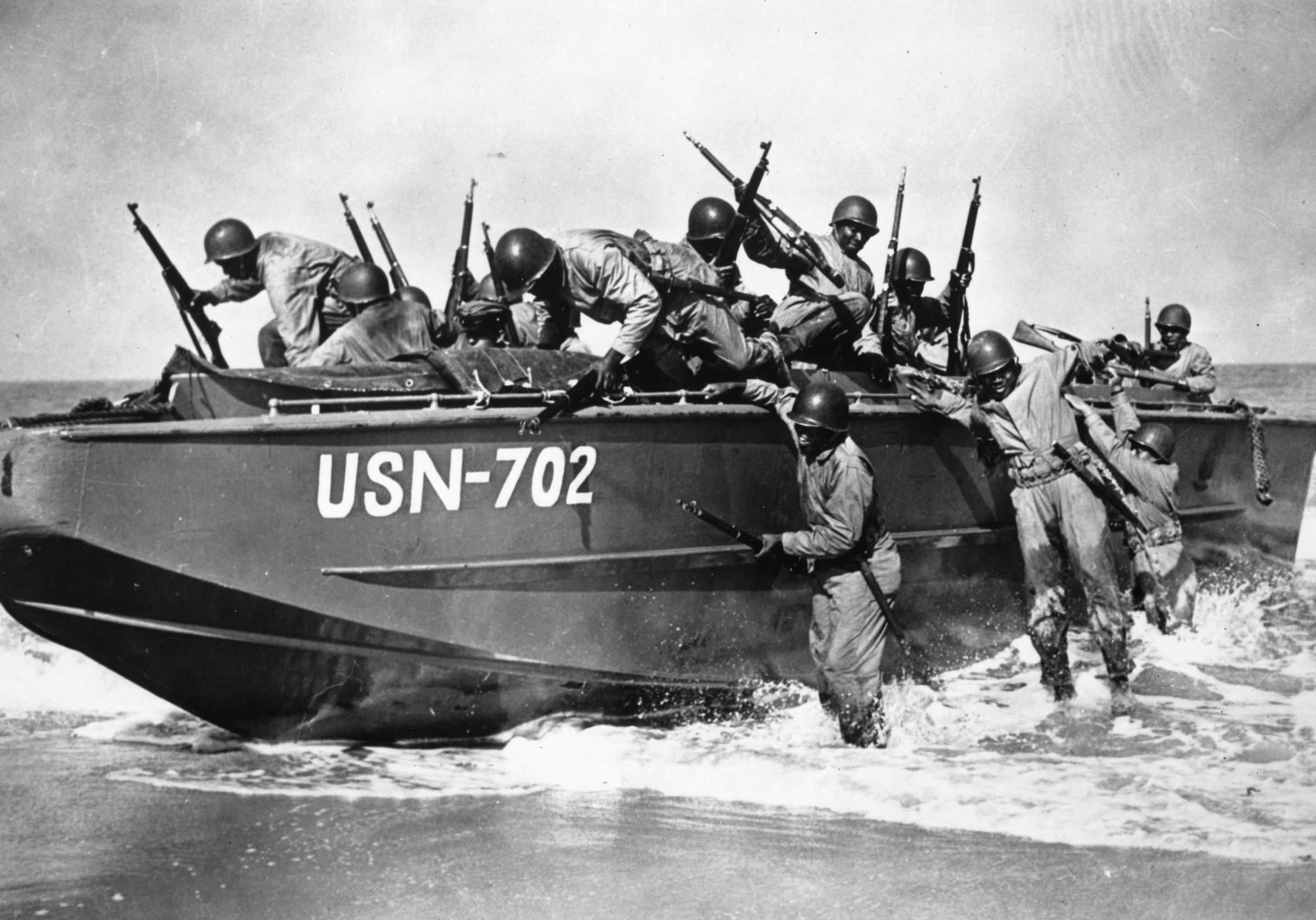
Then there were the Navajo Indians who used their native tongue to transmit messages between Marine Corps units; the Japanese never broke that code.
Yes, we had segregated units and discrimination against black Americans, Native Americans, and Japanese Americans who could have been bitter but were not. I can tell you, on the battlefield, neither segregation nor discrimination exist; their presence could cost you your life. In battle we don’t need to burden ourselves by trying to remember incidents of prejudice. To my mind, the Ira Hayeses, the Dorie Millers (a black mess steward who won the Navy Cross at Pearl Harbor), and the Nisei of World War II are right up there with George Washington and Alexander Hamilton and Thomas Jefferson. If the contributions of these men do not make them patriots, then the word has no meaning.
On Iwo Jima, the inside of Mount Suribachi was dug out and resembled an underground hotel. There was a tunnel with a huge gun on railroad tracks that harassed our ships day and night on both sides of the island. Our ships and planes couldn’t hit it.
Even after we had secured that southwest part of the island, Japanese soldiers were still inside the mountain. They had lots of food and water stored there, so starving them out took a long time.
The commanding general of the Japanese at Iwo, Tadamichi Kuribayashi, had been the military attaché for Japan in Washington, D.C., from 1928 to 1930. He had been invited on a number of occasions to tour U.S. military facilities, so he had a good idea of our strengths and weaknesses. And that is why the island was so well fortified with bomb-proof pillboxes, miles of interconnecting tunnels with multiple entrances and exits, large mortar and rocket launchers, howitzers, and tank guns on the beach. He told his troops: Let the enemy land and make small progress, then open up and hit them where they stand. They did a good job of that.
We learned there were five primary rules for the Japanese soldier:
1. Obey without question
2. Always take the offensive
3. Surprise the enemy whenever possible
4. Never retreat
5. Never surrender
Kuribayashi also had a rule: “Each man has a duty to kill ten of the enemy before dying. Until we are destroyed to the last man, we shall harass the enemy with guerrilla tactics.”
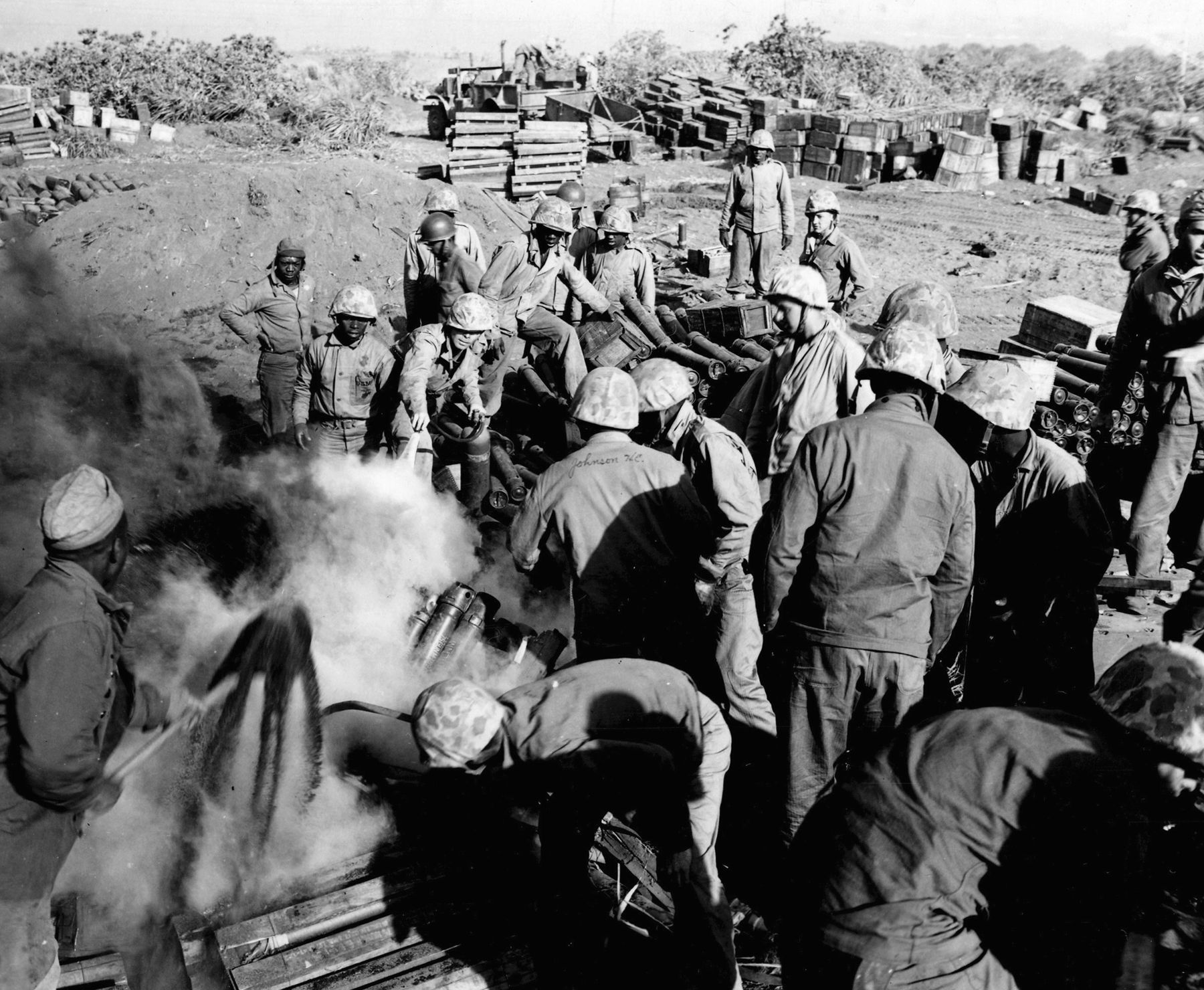
The battle, which began with the naval shelling and aerial bombardments on February 16, officially ended on March 26, although I read somewhere that a few Japanese soldiers were found still alive on the island several years later.
My unit, the 23rd (Special) Construction Battalion, was mainly a black stevedoring unit, but even off-loading cargo was a dangerous job; you never knew when the enemy would lob a mortar round or artillery shell into your area. Two of our companies, A and B, received unit citations for performing their duties “under extremely hazardous conditions.” As far as I was concerned, it was all hazardous. There wasn’t a spot on that island that was safe.
After the fighting died down a little, we moved from our foxholes to tents we set up farther inland. Finally, the Marines secured the island, but enemy shelling and air raids continued sporadically, and Tokyo Rose still broadcast her propaganda to us.
At that time, I was working in the carpenter shop, which was where we cut the lumber for the floors for our tents. Anything that needed building, this is where we did it. I was a helper there.
Before we left Iwo, however, one incident of humiliation occurred at the carpenter shop. An officer came by and was having a conversation with one of the white carpenters as I stood nearby. The officer had a fast speech delivery. As he spoke, he realized he was not giving the other person time to respond. He said, “ Geez, I’m behaving like a nigger.”
Instantly he realized I had heard his remark. I walked away. Later, I asked to speak with him, and he granted my request. I told him what he already knew; I heard what he had said to the carpenter. I went on to tell him how humiliated I was to hear such a word from an officer. He admitted he was in error and gave me an apology. It was clear to me his apology was real. I felt good that I had accepted his apology, and that I understood no human being is perfect. I don’t remember that officer’s name or his rank, but I remember his face and his genuine apology as if it happened yesterday.
By spring of 1945, Iwo Jima was completely secured and America’s methodical move to the invasion of Japan was continuing. Despite the good intentions of some in the armed forces, each branch of service was still segregated. Since my branch was the Navy, I can only speak to what I saw there. All black servicemen who were in the Navy were in totally black units. The one exception was “Headquarters,” which was code for white officers and enlisted personnel who interpreted military policy by which the unit operated.
In the Navy, there were ratings of second class seaman, first class seaman, and then chief petty officer. Unlike the Army, Air Corps, or Marines, there were no corporals, sergeants, or other different ranks. In all of the time I was in the Navy, I met only one black chief petty officer. And he was clearly in a clerical position. So the entire makeup of headquarters in our unit was white. At that time, there was no talk of integrating the armed services. That didn’t happen until President Truman issued an executive order in 1948.
About the middle of August 1945, we left Iwo for another unknown destination––this time in a large, flat-bottomed, ocean-going ship known as an LST (Landing Ship, Tank), which could dock right up on the shore. We sailed for about a month and we didn’t know until we were almost there that we were landing at Okinawa.
When we arrived, about half of the island was secure. Compared to Iwo Jima, Okinawa was huge. After we got settled, it was time to get our assignments. I was one of those guys on “general duty.” I did whatever, whenever.
One time I was assigned to truck-driving duty and was carrying a load of ammunition to the front line. When I passed the sentry post, there was no one there, so I just kept going. I couldn’t have been more than a hundred yards past the post when, suddenly, enemy fire went across my truck. I backed out as quickly as I could. By this time the guard was back at the sentry post. I asked him why he wasn’t there to tell me I was going up the wrong road. His reply: “I figured you’d find out soon enough,” or words to that effect. That is the kind of humor we dealt with in the heat of battle. I didn’t get angry with him; I understood where he was coming from.
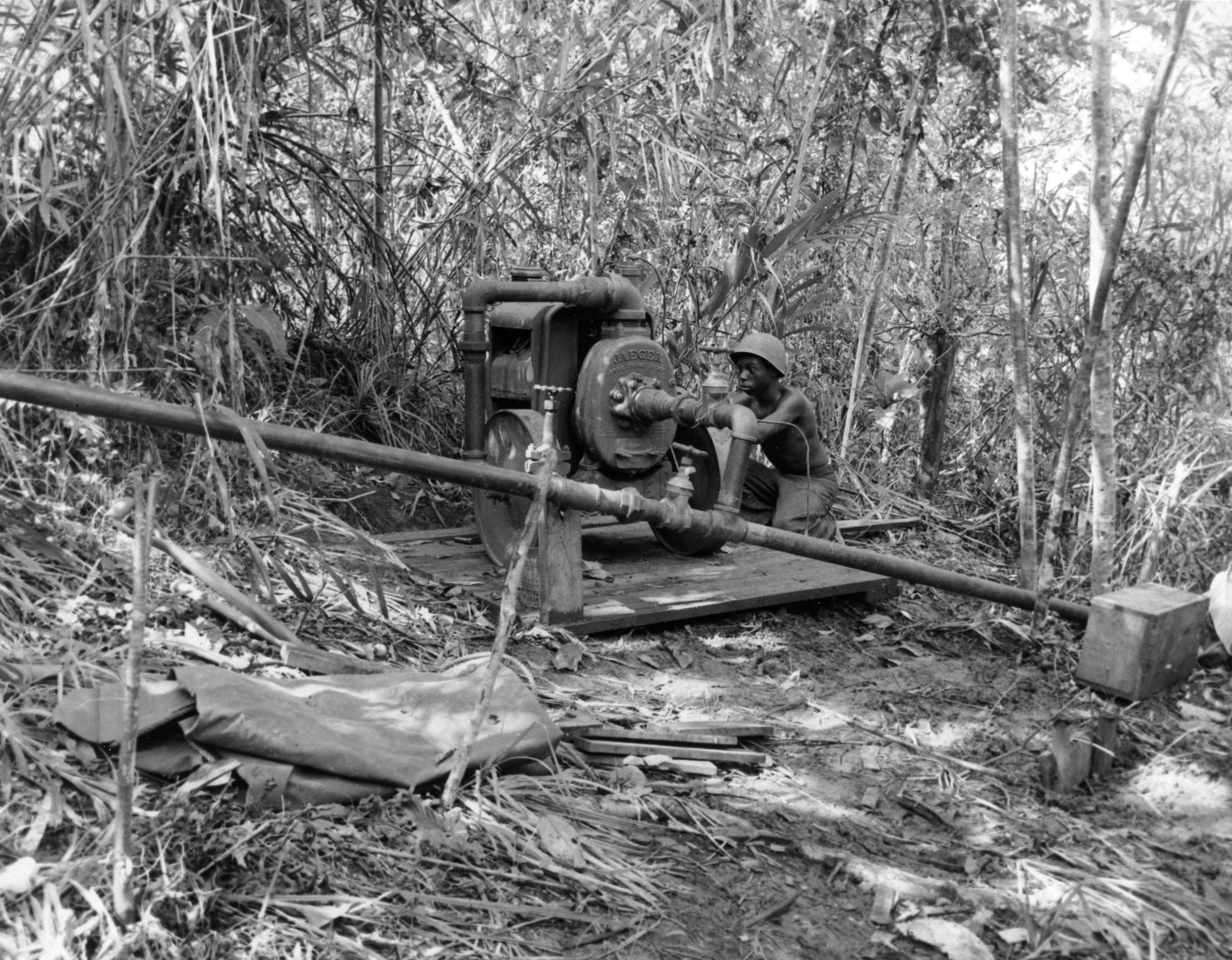
Another night I was waiting at the dock to have my truck loaded with supplies. You could not drive with lights on—almost everything had to be done in the dark. While I was waiting, two soldiers approached my truck and in perfect English said, “Joe (all military persons were called Joe), can you tell me where Yellow Beach is (colors were code for beaches we had secured)?” I told them where Yellow Beach was.
As far as I could tell, they were American soldiers, as they were in American uniforms. It turned out they were Japanese educated in America. About 20 minutes later they were captured. I have often thought that they could have put a bullet in my head. I think they didn’t because it would have meant instant capture.
On Okinawa I mostly worked in the mess hall. Of all the duties I was assigned, I liked the mess hall the least. I don’t remember how long I worked there, but they needed a waiter in the officer’s mess, so I was chosen to fill that vacancy. My rank was not changed to steward’s mate, but I performed that function. I was not enthralled with the assignments given me; I recognized that black sailors were not thought of by the powers that be as “real” sailors, but the reality was, it didn’t matter. The situation “was what it was,” and I needed to make the best of it and be proud of whatever contribution I made to my country, even if it was just waiting on white officers.
I was 19 years of age now, the war in Europe was over, Japan had surrendered, and it was time for me to make a decision about what I wanted to do with my life. The Navy was asking men to reenlist, and I heard there was a program where you could reenlist and choose your theater, guaranteed. I always wanted to see Europe so I decided I would reenlist and ask for Europe. When I asked to sign up for France, I discovered the guarantee was not really guaranteed; I was told there were no openings in Europe.
I was now back to square one; I had no Plan B. Then I heard about the G.I. Bill of Rights and decided to check it out. On my day off, I went back to the main camp and got an explanation of what the G.I. Bill of Rights was. Any serviceperson could go to school and the government would pay for tuition and books and pay the serviceperson $90 a month equal to the number of months served. I could find no reason not to do this, and if one did, one had to be toting water around in a leaky bucket.
I have to say that when Japan surrendered, I was not all that happy. Joining the Navy had been the best thing that had ever happened to me. I had visited places I didn’t know existed. I got to travel the world and I enjoyed almost every minute of it. I remember how awed I was when, on the way to Iwo Jima, we crossed the equator and the International Date Line, and I remembered the ocean waters being as smooth as a mirror. I really looked forward to going to Japan, but then the war ended; I wanted to see what Japan looked like. All those emotions notwithstanding, on December 5, 1945, we boarded ship to return to the United States of America.
Just as I had watched with fear as San Francisco dropped behind the horizon almost two years before, there was nothing but joy in me when I saw America show up on the horizon as we arrived HOME. Our converted Merchant Marine ship traveled up the river to Portland, Oregon, to our destination. I was not aware that such a large ship could navigate river waters.
When we disembarked, we were taken to a huge warehouse to get all kinds of shots to protect our health and the health of the people we would come in contact with, and were quarantined for about a week.
It was such a joy to finally get liberty and explore Portland. I met some wonderful people at different entertainment places there. When we were given our 30-day leave, it was New Year’s Eve, 1946. I did not want to be on a train on New Year’s Day, so I decided to remain in Portland. I met a very nice family there that let me stay in a spare room they had until I left on January 2.
I had a three-hour layover in Denver, Colorado––another place I had never heard of. I went to a drugstore that had an ice cream counter and booths. I ordered an ice cream cone, but I was not sure I was welcome to sit. The white female clerk sensed my hesitation and suggested I sit and enjoy my cone. I can’t tell you what a relief that was. This is the first time I had been alone in a city outside the South, and I had no idea about its customs.
I went to a movie and it was the first time I had gone to a movie theater outside the South and I saw no signs directing me to go upstairs to seats set aside for blacks. (At home we called the balcony the “crows’ nest.”) And, as I observed the neighborhoods, I noticed they were washing the streets. I had never seen that. I was so impressed, I made the decision that after I was discharged I would come back to Denver and make it my home.
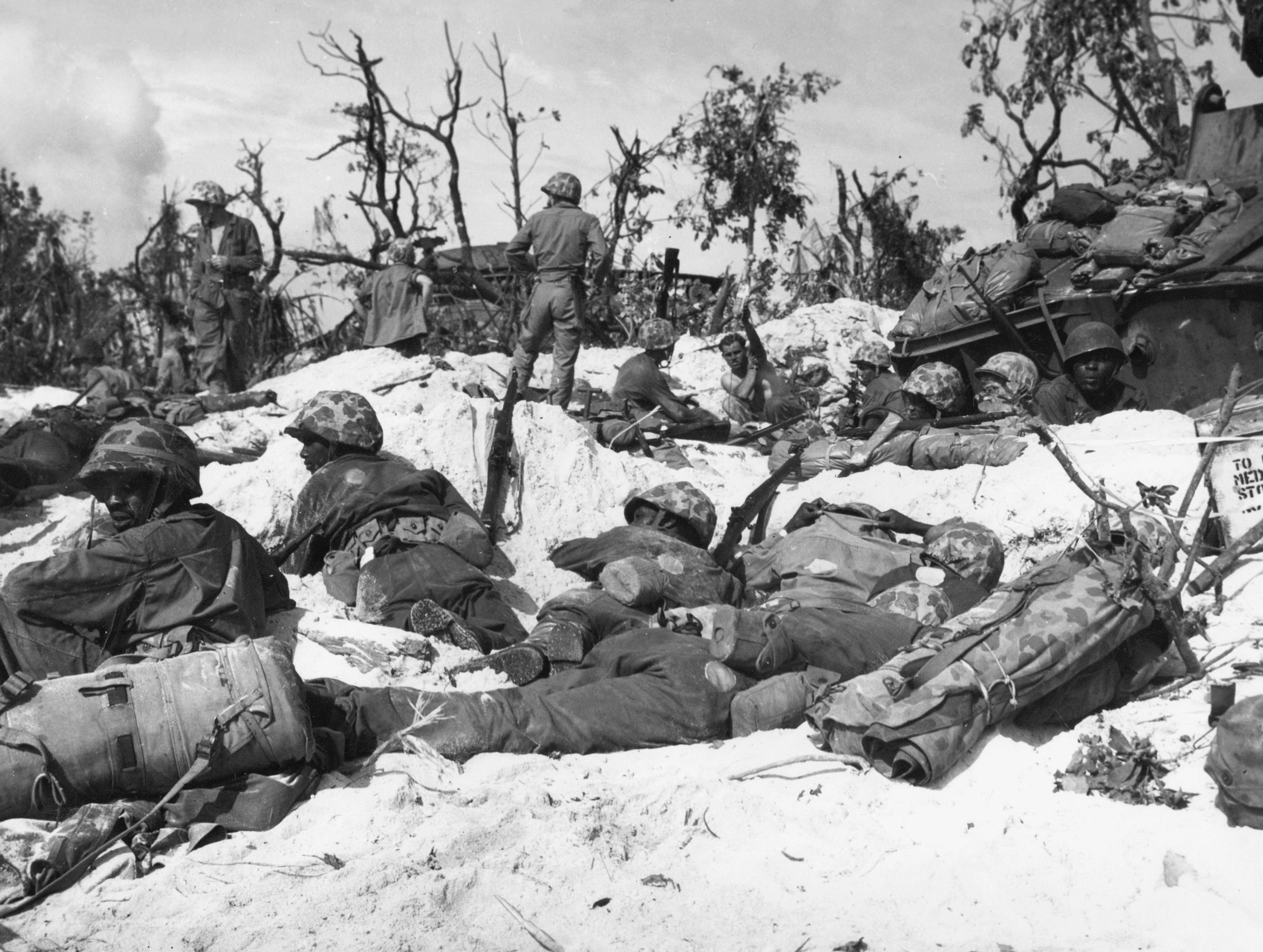
After being separated from the Navy on February 2, 1946, I returned home to Mississippi; nothing had changed. Total separation of the races was still in force. I found myself becoming restless there. I would buy a ticket on a bus and go to places I had no reason to visit. When I look back on it, I attribute that restlessness to all the wonderful places I had visited, courtesy of the Navy, for two years.
After that visit, I realized I had to make a decision about what I was going to do with my life. I spoke with Dr. Allen, who operated the lone black drugstore in Columbus. I had given some thought to becoming a physician, but here I was, almost 20 years old, and had not yet finished the ninth grade. He encouraged me to “get with it” and finish high school.
To make a long story short, I enrolled in high school in Holly Springs, Mississippi. While I was in Holly Springs, there was a parade through the downtown area. I was part of it; I wore my Navy uniform and proudly carried the United States flag.
The town voter registrar’s office was open for voting, for what election I don’t remember. Having served two years in the United States Navy, I knew I had a right to vote. It was a spur of the moment decision; I had no agenda. When I entered the office, dressed in my Navy uniform, the white registrar seemed surprised to see me. I told her that I wanted to register to vote. In a stern voice she told me “Niggers don’t vote” and invited me to leave, which I did. As I left, I remember thinking, I volunteered for the Navy to preserve the right of freedom in this country and still I have not earned the right to vote. It was a humiliating experience. And to this day I cherish the right to cast my vote and I consider it very private.
After graduating from high school, I then followed Dr. Allen’s advice and enrolled in pharmacy school at Xavier University in New Orleans in September 1948.
I had never been to New Orleans and I didn’t know what to expect when I arrived. I did know that the city was in the South, so I expected it to be segregated; I was not disappointed. The university was segregated, too, but today it is integrated.
After the first semester of my second year in the School of Pharmacy, I struggled to keep my grades up. The nuns knew we black students came from inferior high schools, so they put on classes at night and on the weekends so we could get special help. I took advantage of all of the classes I needed because I was behind.
In my senior year, in order to graduate, I had to take 27 semester hours, a crushing load. The pharmacy school dean did not want me to do that, but I told him I had to finish that year (1952) because there was no way I could come back for a fifth year; he reluctantly allowed me to go forward. I made better grades that semester than I did when I was taking regular hours. That gave me an insight into my resolve. I learned that I seem to do better when I am under a deadline.
After graduating, I moved to Denver and had a variety of responsible positions as a pharmacist with various hospitals (including being director of pharmacy at several, and even owning my own drugstore for a while). In 1957, I married Eula Inez Long and we had two wonderful children, Lisa Downing and Joseph III, now grown. As of 2010, Eula and I will have celebrated 52 years of married life. I was involved in efforts to end discrimination in housing in Denver and I’m pleased to say that, today, everybody can buy and live anywhere they can afford.
The next step is to bring about more perfect relationships. As I see it, we as a people, as Dr. Martin Luther King, Jr., once put it, must learn to judge each other by the content of our character, rather than by the color of our skin. That might very well take longer to achieve than the time we have spent on the bumpy road we have already traveled.
I can truthfully say, as terrible as the war was, World War II and my service with the Navy provided me with opportunities that I most likely would never have experienced otherwise.
And whenever I see an American flag, I am always reminded of the one that was raised on top of a mountain on a small, bloody island in the Pacific Ocean. And I am grateful.
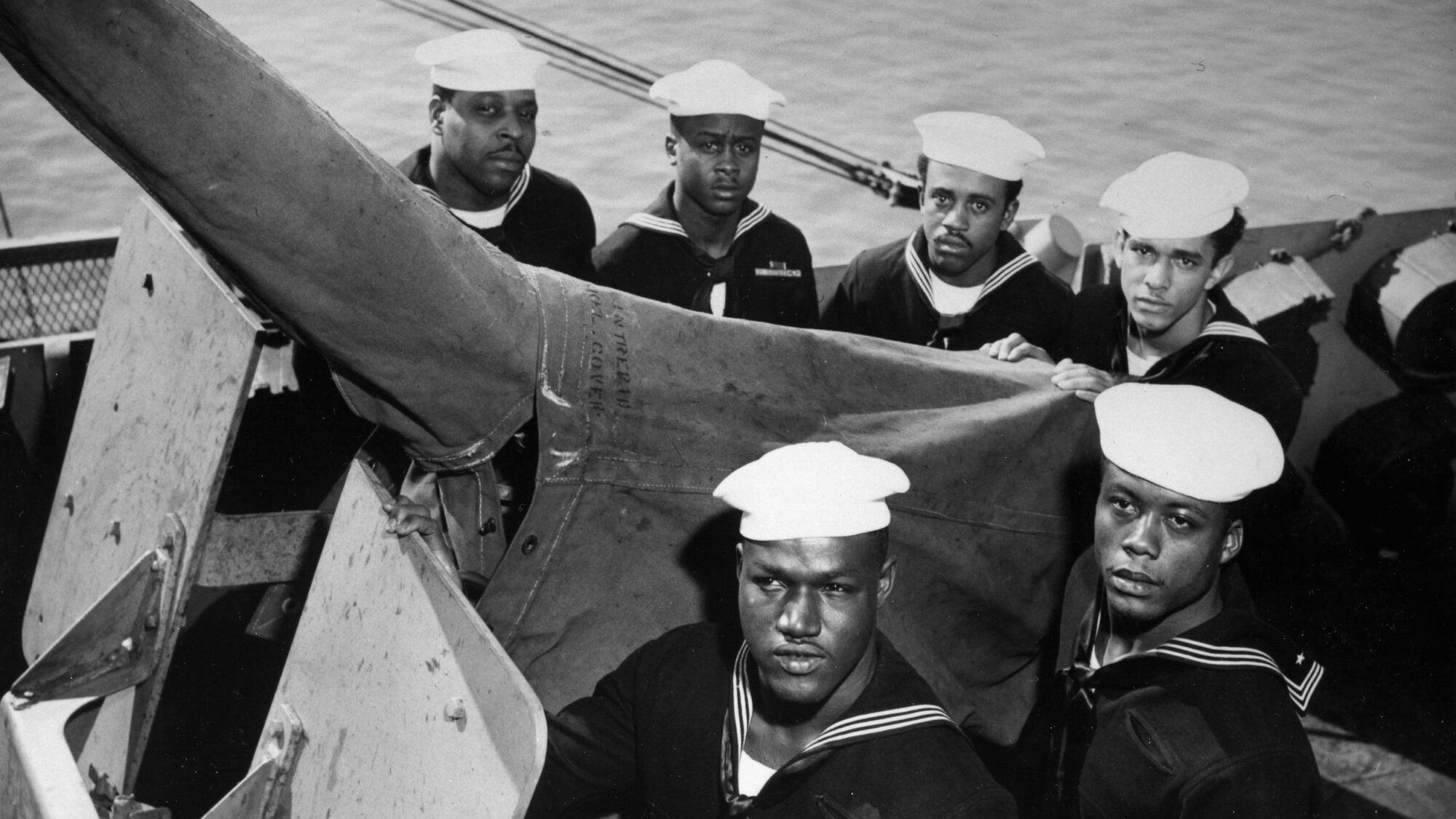
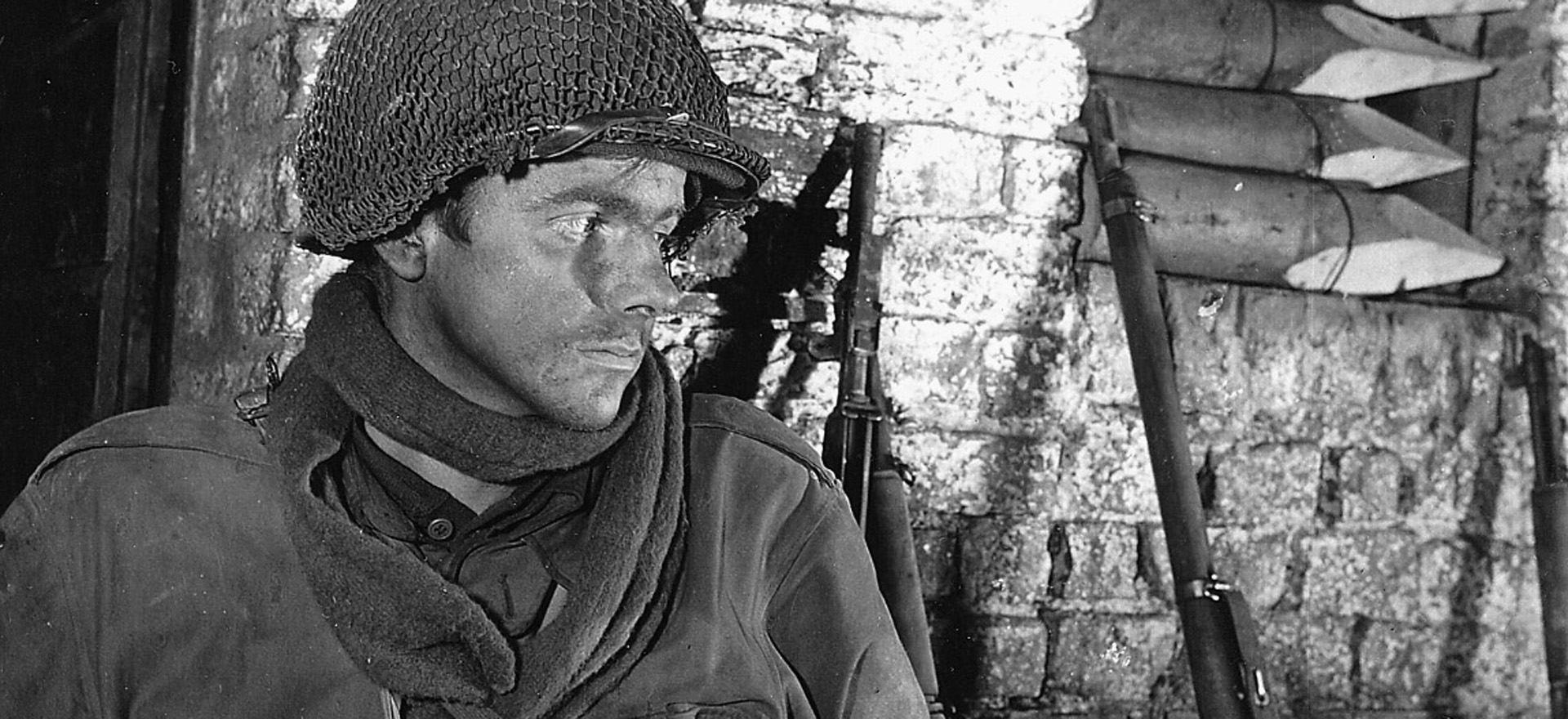
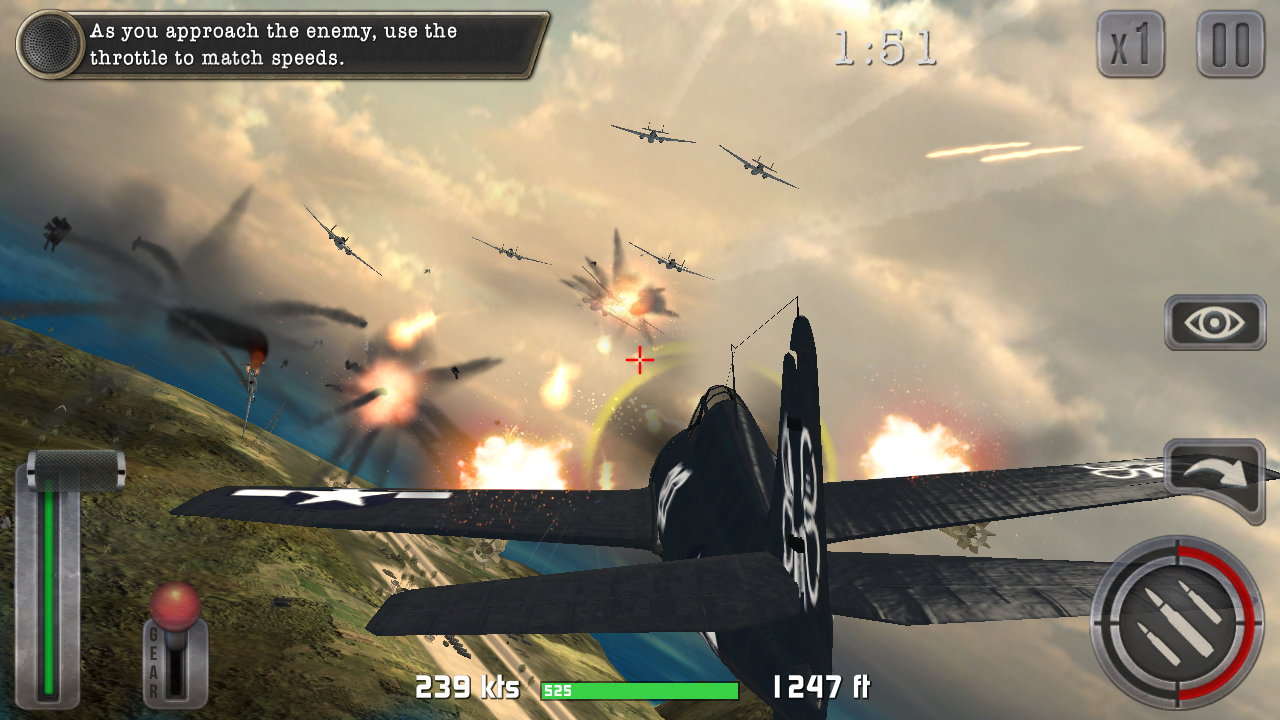
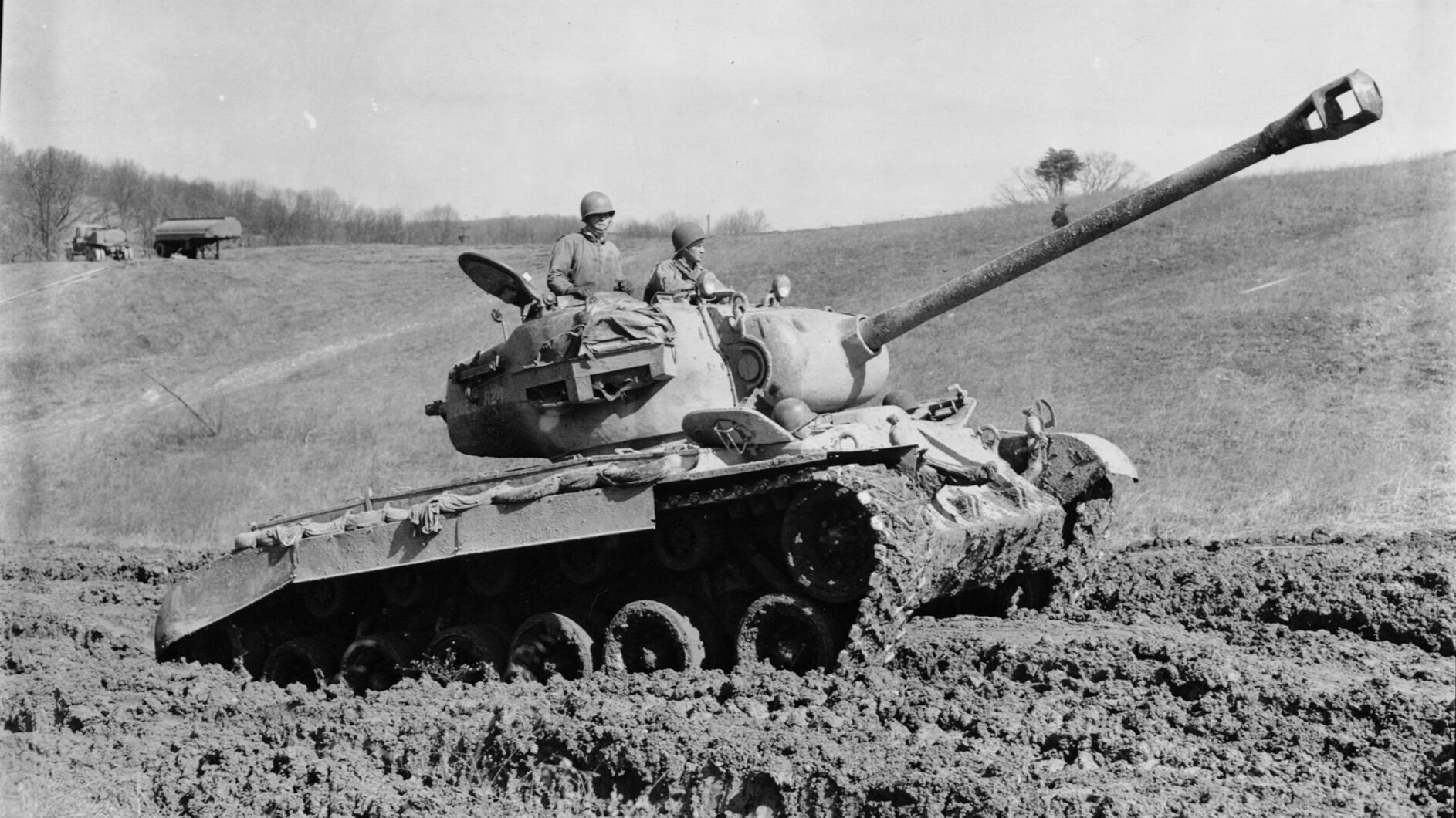
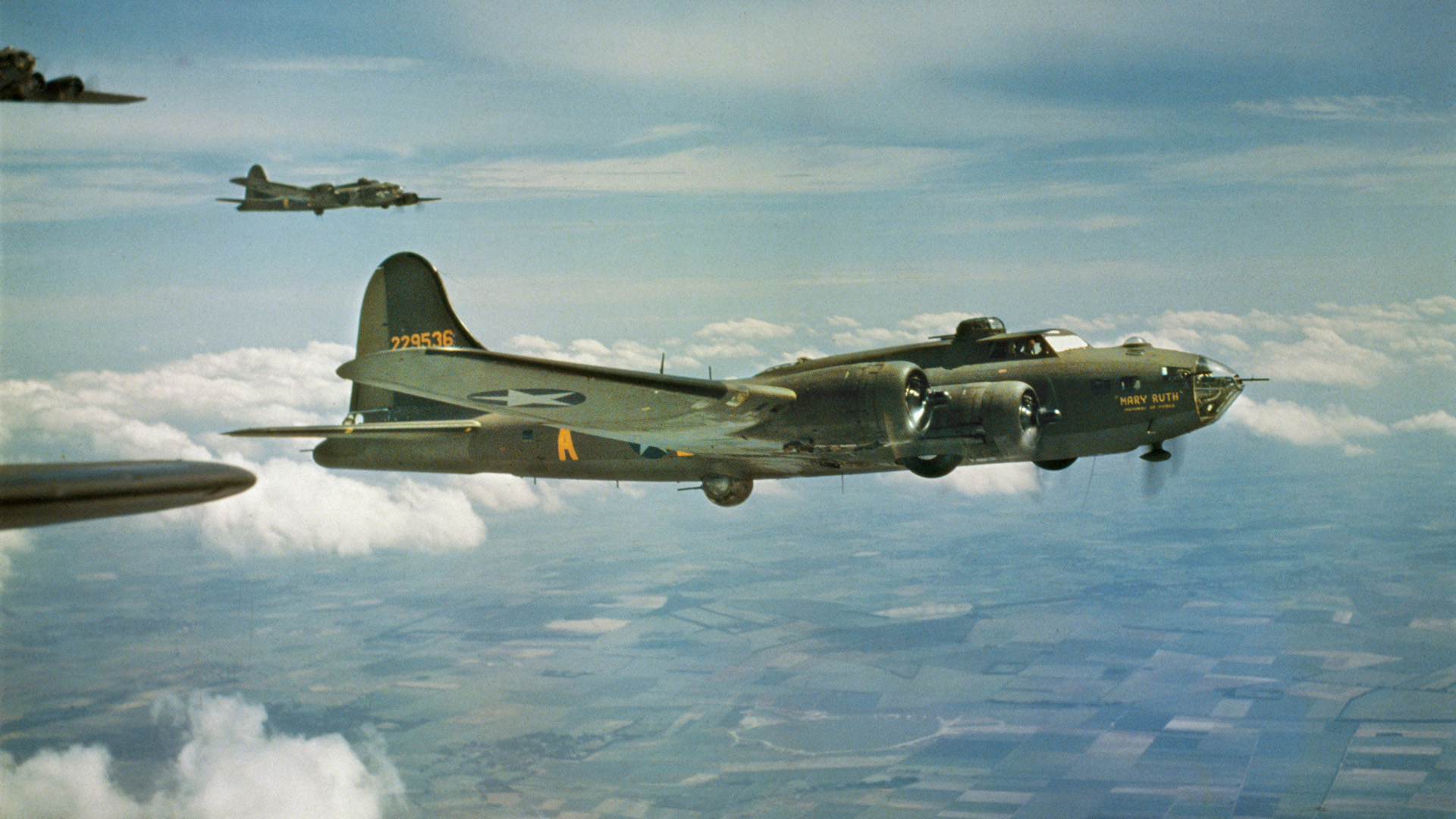
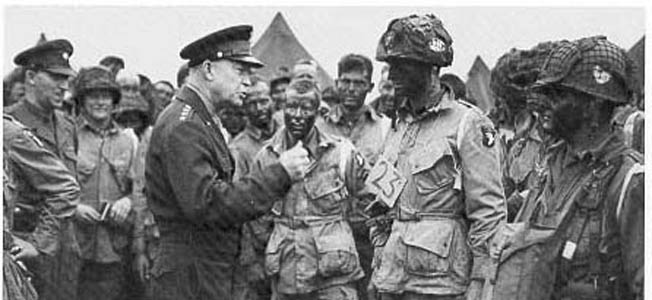
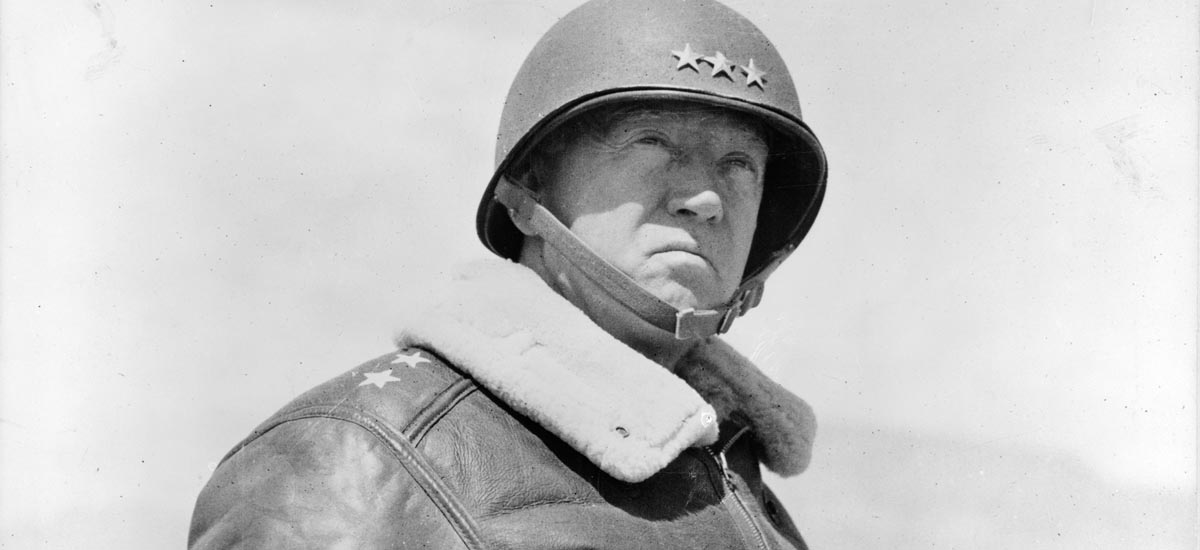
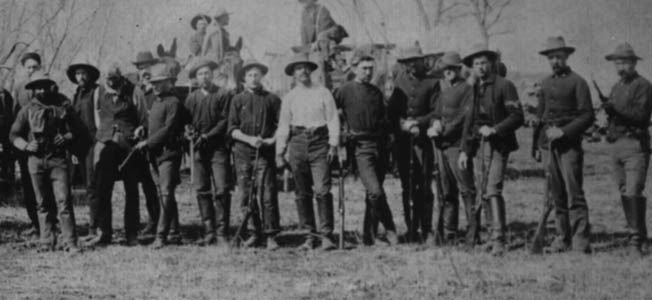

Join The Conversation
Comments
View All Comments